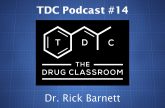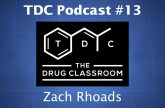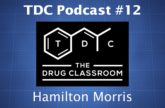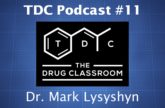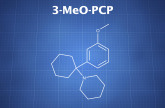The FDA released a statement warning people about Mitragyna speciosa (Kratom) on November 14, 2017. Although that statement didn’t confirm the government is going to pursue a ban on the plant, it’s not a very hopeful message. Much like the DEA, the FDA highlighted poisonings and fatalities associated with kratom and kratom-containing products. But it’s likely most of those involved polydrug exposure. There’s little evidence kratom by itself has a high overdose death potential.
We’re still waiting to see what the FDA recommends to the DEA. That recommendation could push the government towards prohibiting the substance, just as federal authorities tried to do through emergency scheduling in 2016.
Along with discussing the misleading nature of the FDA’s statement, I discuss misleading statements from advocates who oppose a ban. Sadly, it appears a lot of people are advocating against prohibition using arguments that spread false ideas about the substance.
References
Aggarwal, G., Robertson, E., McKinlay, J., & Walter, E. (2017). Death from Kratom toxicity and the possible role of intralipid. Journal of the Intensive Care Society, 0(0), 175114371771265. https://doi.org/10.1177/1751143717712652
Anwar, M., Law, R., & Schier, J. (2016). Notes from the Field: Kratom (Mitragyna speciosa) Exposures Reported to Poison Centers – United States, 2010-2015. MMWR. Morbidity and Mortality Weekly Report, 65(29), 748–749. https://doi.org/10.15585/mmwr.mm6529a4
Arnautovic, J., Souther, B., Tereziu, S., & Weerakoon, N. (2016). Kratom-induced alveolar hemorrhage. Critical Care Medicine, 44(12), 553. https://doi.org/10.1097/01.ccm.0000510586.33391.90
Bunnag, A., Meyen, R., & Fernando, I. (2017). Kratom ( Mitragyna speciosa ) Use in a Veteran With Chronic Pain. The American Journal of Psychiatry Residents’ Journal, (3), 13–15.
Castillo, A., Payne, J. D., & Nugent, K. (2017). Posterior reversible leukoencephalopathy syndrome after kratom ingestion. Proceedings (Baylor University. Medical Center), 30(3), 355–357. Retrieved from http://www.ncbi.nlm.nih.gov/pubmed/28670086%0Ahttp://www.pubmedcentral.nih.gov/articlerender.fcgi?artid=PMC5468044
Chang-Chien, G. C., Odonkor, C. A., & Amorapanth, P. (2017). Is Kratom the New “Legal High” on the Block?: The Case of an Emerging Opioid Receptor Agonist with Substance Abuse Potential. Pain Physician, 20(1), E195–E198. Retrieved from http://www.ncbi.nlm.nih.gov/pubmed/28072812
Cinosi, E., Martinotti, G., Simonato, P., Singh, D., Demetrovics, Z., Roman-Urrestarazu, A., … Corazza, O. (2015). Following “the Roots” of Kratom (Mitragyna speciosa): The Evolution of an Enhancer from a Traditional Use to Increase Work and Productivity in Southeast Asia to a Recreational Psychoactive Drug in Western Countries. BioMed Research International, 2015. https://doi.org/10.1155/2015/968786
Cumpston, K. L., Carter, M., & Wills, B. K. (2017). Clinical outcomes after Kratom exposures: A poison center case series. The American Journal of Emergency Medicine, 3, 2–3. https://doi.org/10.1016/j.ajem.2017.07.051
DEA. (n.d.). DEA Resource Guide – 2017.
Diep, J., Chin, D. T., Gupta, S., Syed, F., Xiong, M., & Cheng, J. (2017). Kratom, an Emerging Drug of Abuse. A & A Case Reports, XXX(Xxx), 1. https://doi.org/10.1213/XAA.0000000000000658
Domingo, O., Roider, G., Stöver, A., Graw, M., Musshoff, F., Sachs, H., & Bicker, W. (2017). Mitragynine concentrations in two fatalities. Forensic Science International, 271, e1–e7. https://doi.org/10.1016/j.forsciint.2016.12.020
Dorman, C., Wong, M., & Khan, A. (2015). Cholestatic hepatitis from prolonged kratom use: A case report. Hepatology, 61(3), 1086–1087. https://doi.org/10.1002/hep.27612
Drago, J. Z., Lane, B., Kochav, J., & Chabner, B. (2017). The Harm in Kratom. The Oncologist, 22(8), 1010–1011. https://doi.org/10.1634/theoncologist.2017-0279
Forrester, M. B. (2017). Texas Bull Nettle (Cnidoscolus texanus) Exposures Reported to Texas Poison Centers. Wilderness and Environmental Medicine, 28(2), 79–83. https://doi.org/10.1016/j.wem.2017.01.028
Griffin, O. H., & Webb, M. E. (2017). The Scheduling of Kratom and Selective Use of Data. Journal of Psychoactive Drugs, 1072(September), 1–7. https://doi.org/10.1080/02791072.2017.1371363
Harizal, S. N., Mansor, S. M., Hasnan, J., Tharakan, J. K. J., & Abdullah, J. (2010). Acute toxicity study of the standardized methanolic extract of Mitragyna speciosa Korth in Rodent. Journal of Ethnopharmacology, 131(2), 404–409. https://doi.org/10.1016/j.jep.2010.07.013
Hassan, Z., Muzaimi, M., Navaratnam, V., Yusoff, N. H. M., Suhaimi, F. W., Vadivelu, R., … Müller, C. P. (2013). From Kratom to mitragynine and its derivatives: Physiological and behavioural effects related to use, abuse, and addiction. Neuroscience & Biobehavioral Reviews, 37(2), 138–151. https://doi.org/10.1016/j.neubiorev.2012.11.012
Houghton, P. (1989). Alkaloids from mitragyna speciosa. Phytochemistry, 40(3), 497–501.
Ilmie, M. U., Jaafar, H., Mansor, S. M., & Abdullah, J. M. (2015). Subchronic toxicity study of standardized methanolic extract of mitragyna speciosa korth in sprague-dawley rats. Frontiers in Neuroscience, 9(MAY), 1–6. https://doi.org/10.3389/fnins.2015.00189
Jamil, M. F. A., Subki, M. F. M., Lan, T. M., Majid, M. I. A., & Adenan, M. I. (2013). The effect of mitragynine on cAMP formation and mRNA expression of mu-opioid receptors mediated by chronic morphine treatment in SK-N-SH neuroblastoma cell. Journal of Ethnopharmacology, 148(1), 135–143. https://doi.org/10.1016/j.jep.2013.03.078
Kapp, F. G., Maurer, H. H., Auw??rter, V., Winkelmann, M., & Hermanns-Clausen, M. (2011). Intrahepatic Cholestasis Following Abuse of Powdered Kratom (Mitragyna speciosa). Journal of Medical Toxicology, 7(3), 227–231. https://doi.org/10.1007/s13181-011-0155-5
Karinen, R., Fosen, J. T., Rogde, S., & Vindenes, V. (2014). An accidental poisoning with mitragynine. Forensic Science International, 245, e29–e32. https://doi.org/10.1016/j.forsciint.2014.10.025
Kruegel, A. C., Gassaway, M. M., Kapoor, A., Váradi, A., Majumdar, S., Filizola, M., … Sames, D. (2016). Synthetic and Receptor Signaling Explorations of the Mitragyna Alkaloids: Mitragynine as an Atypical Molecular Framework for Opioid Receptor Modulators. Journal of the American Chemical Society, 138(21), 6754–6764. https://doi.org/10.1021/jacs.6b00360
Kruegel, A. C., & Grundmann, O. (2017). The medicinal chemistry and neuropharmacology of kratom: A preliminary discussion of a promising medicinal plant and analysis of its potential for abuse. Neuropharmacology. Elsevier Ltd. https://doi.org/10.1016/j.neuropharm.2017.08.026
Lanier, R. K., Fant, R. V., Cone, E., & Henningfield, J. (2017). Assessment of the abuse potential and benefits of kratom and its mitragynine alkaloids: Implications for regulation. Drug and Alcohol Dependence, 171(2017), e114. https://doi.org/10.1016/j.drugalcdep.2016.08.317
Lydecker, A. G., Sharma, A., McCurdy, C. R., Avery, B. A., Babu, K. M., & Boyer, E. W. (2016). Suspected Adulteration of Commercial Kratom Products with 7-Hydroxymitragynine. Journal of Medical Toxicology, 12(4), 341–349. https://doi.org/10.1007/s13181-016-0588-y
Lydecker, A. G., Zuckkerman, M. D., Hack, J. B., Becker, B., Cherkes, J. K., Boyer, E. W., & Babu, K. M. (2017). Intravenous Kratom Use in aPatient with Opioid Dependence. Journal of Toxicology and Pharmacology, 1(1).
Madariaga-Mazón, A., Marmolejo-Valencia, A. F., Li, Y., Toll, L., Houghten, R. A., & Martinez-Mayorga, K. (2017). Mu-Opioid receptor biased ligands: A safer and painless discovery of analgesics? Drug Discovery Today, 22(11), 1719–1729. https://doi.org/10.1016/j.drudis.2017.07.002
McIntyre, I. M., Trochta, A., Stolberg, S., & Campman, S. C. (2015). Mitragynine “Kratom” related fatality: A case report with postmortem concentrations. Journal of Analytical Toxicology, 39(2), 152–155. https://doi.org/10.1093/jat/bku137
Neerman, M. F., Frost, R. E., & Deking, J. (2013). A Drug Fatality Involving Kratom. Journal of Forensic Sciences, 58(SUPPL. 1), 278–279. https://doi.org/10.1111/1556-4029.12009
Parthasarathy, S., Ramanathan, S., Ismail, S., Adenan, M. I., Mansor, S. M., & Murugaiyah, V. (2010). Determination of mitragynine in plasma with solid-phase extraction and rapid HPLC-UV analysis, and its application to a pharmacokinetic study in rat. Analytical and Bioanalytical Chemistry, 397(5), 2023–2030. https://doi.org/10.1007/s00216-010-3707-7
Prozialeck, W. C. (2016). Update on the Pharmacology and Legal Status of Kratom. The Journal of the American Osteopathic Association, 116(12), 802. https://doi.org/10.7556/jaoa.2016.156
Prozialeck, W. C., Jivan, J. K., & Andurkar, S. V. (2012). Pharmacology of kratom: an emerging botanical agent with stimulant, analgesic and opioid-like effects. The Journal of the American Osteopathic Association, 112(12), 792–9. https://doi.org/10.7556/JAOA.2012.112.12.792
Shellard, E., Houghton, P., & Resha, M. (1978). The Mitragyna Species of Asia. Planta Medica, 34(7), 253–263. https://doi.org/10.1055/s-0028-1097448
Singh, D., Müller, C. P., & Vicknasingam, B. K. (2014). Kratom (Mitragyna speciosa) dependence, withdrawal symptoms and craving in regular users. Drug and Alcohol Dependence, 139, 132–137. https://doi.org/10.1016/j.drugalcdep.2014.03.017
Singh, D., Narayanan, S., & Vicknasingam, B. (2016). Traditional and non-traditional uses of Mitragynine (Kratom): A survey of the literature. Brain Research Bulletin, 126, 41–46. https://doi.org/10.1016/j.brainresbull.2016.05.004
Siuda, E. R., Carr, R., Rominger, D. H., & Violin, J. D. (2017). Biased mu-opioid receptor ligands: a promising new generation of pain therapeutics. Current Opinion in Pharmacology, 32, 77–84. https://doi.org/10.1016/j.coph.2016.11.007
Smith, K. E., & Lawson, T. (2017). Prevalence and motivations for kratom use in a sample of substance users enrolled in a residential treatment program. Drug and Alcohol Dependence, 180(July), 340–348. https://doi.org/10.1016/j.drugalcdep.2017.08.034
Suhaimi, F. W., Yusoff, N. H. M., Hassan, R., Mansor, S. M., Navaratnam, V., Müller, C. P., & Hassan, Z. (2016). Neurobiology of Kratom and its main alkaloid mitragynine. Brain Research Bulletin, 126, 29–40. https://doi.org/10.1016/j.brainresbull.2016.03.015
Swogger, M. T., Hart, E., Erowid, F., Erowid, E., Trabold, N., Yee, K., … Walsh, Z. (2015). Experiences of Kratom Users: A Qualitative Analysis. Journal of Psychoactive Drugs, 47(5), 360–367. https://doi.org/10.1080/02791072.2015.1096434
Takayama, H. (2004). Chemistry and pharmacology of analgesic indole alkaloids from the rubiaceous plant, Mitragyna speciosa. Chemical & Pharmaceutical Bulletin, 52(8), 916–928. https://doi.org/10.1248/cpb.52.916
Trakulsrichai, S., Tongpo, A., Sriapha, C., Wongvisawakorn, S., Rittilert, P., Kaojarern, S., & Wananukul, W. (2013). Kratom Abuse in Ramathibodi Poison Center, Thailand: A Five-Year Experience. Journal of Psychoactive Drugs, 45(5), 404–408. https://doi.org/10.1080/02791072.2013.844532
Váradi, A., Marrone, G. F., Palmer, T. C., Narayan, A., Szabó, M. R., Le Rouzic, V., … Majumdar, S. (2016). Mitragynine/Corynantheidine Pseudoindoxyls As Opioid Analgesics with Mu Agonism and Delta Antagonism, Which Do Not Recruit β-Arrestin-2. Journal of Medicinal Chemistry, 59(18), 8381–8397. https://doi.org/10.1021/acs.jmedchem.6b00748
Voelker, R. (2016). Kratom Products Seized. Jama-Journal of the American Medical Association, 316(11), 1142. https://doi.org/10.1001/jama.2016.12571
Warner, M. L., Kaufman, N. C., & Grundmann, O. (2016). The pharmacology and toxicology of kratom: from traditional herb to drug of abuse. International Journal of Legal Medicine, 130(1), 127–138. https://doi.org/10.1007/s00414-015-1279-y
Yusoff, N. H. M., Mansor, S. M., Müller, C. P., & Hassan, Z. (2017). Opioid receptors mediate the acquisition, but not the expression of mitragynine-induced conditioned place preference in rats. Behavioural Brain Research, 332(March), 1–6. https://doi.org/10.1016/j.bbr.2017.05.059
Yusoff, N. H. M., Suhaimi, F. W., Vadivelu, R. K., Hassan, Z., R??mler, A., Rotter, A., … M??ller, C. P. (2016). Abuse potential and adverse cognitive effects of mitragynine (kratom). Addiction Biology, 21(1), 98–110. https://doi.org/10.1111/adb.12185










